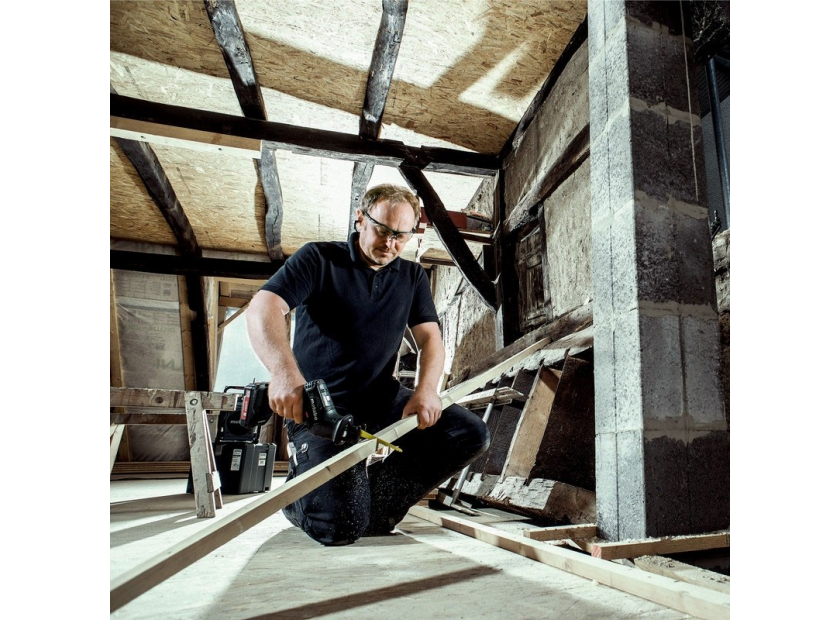Blog
-
Posted: November 08, 2022Categories: MedicalRead More
The Affordable Care Act’s primary objectives are to transform the current U.S. healthcare ecosystem into one that is:
- good for patients, who can enjoy better health, share in their health decisions, and manage their expense effectively
- good for the industry, leading to overall cost-effective healthcare
- good for physicians and other healthcare professionals, enabling them to focus on delivery of optimal medical care
- good for healthcare practices, aligning practitioners, fostering collaboration, and working toward a single goal of delivery of optimal care
If we were to rate the current progress of ACA, the healthcare sectors would have a lot going for them, but looking ahead, it may be a bumpy ride over the next few years with a lot more work required. As we benchmark the financial outlook for the first quarter of 2018, the positive indicators show healthcare companies’ balance sheets are strong, overall cost structures continue to improve, and stocks have good dividend yields. Continued demand appears to be on the rise for healthcare products and services, partly as a result of the growth of our aging population. Unfortunately, these positive factors are being countered by several negative indicators, including political volatility and uncertainty facing ACA and growing national deficit that could change some of the funding sources currently earmarked for the healthcare sector.
Prior to the implementation of ACA, it was well recognized by both the public and private sector that our healthcare system was not sustainable and we were on the road toward the “perfect storm.” The growing swell was influenced by 18% of GNP directly attributed to healthcare and expected to rise to 30% of GNP by 2050; care demand on the rise with over 25% of the population having multiple chronic disease and growth of chronic disease predicted to grow 1% per year until 2030; a
-
Posted: November 08, 2022Categories: MedicalRead More
Long before the opioid epidemic was thought to be a public health emergency, prescription drug abuse and misuse were steadily increasing in the U.S.
To combat this, states and hospitals have been building technological platforms to enable prescription drug monitoring programs that can the track habits of both prescribers and patients. But use of PDMPs varies by state, with some states mandating its use and others merely recommending that hospitals and medical groups opt-in.
With the Trump administration saying it will crack down on opioid abuse, it begs the question: Could these data-heavy platforms make a dent in the crisis?
Every state but Missouri
As it stands, every state has its own PDMP, outside of Missouri -- the state has made multiple attempts and failures to implement a statewide platform. And 46 of U.S. states are part of the collaborative PMP InterConnect, an interstate group started by Appriss Health in 2011 that fosters prescription drug data sharing across state lines.
But whether PDMP use can truly impact the opioid crisis is yet to be determined. A 2017 study by University of Texas Health Science Center at San Antonio and Northwestern researchers found PDMP use effects remain mixed.
On the one hand, researchers found an underlying link between PDMPs and a reduction of misuse and diversion. Further, many of the programs provide a detailed prescribing history of a patient over the course of the past three months.
While the use of PDMPs obviously reduces the number of opioids prescribe
-
Posted: November 08, 2022Categories: MedicalRead More
Pharmacists, how many times have you seen a patient pay for more their medication than they should, all because you’re prohibited from telling them about ways to save money?
How often have you had to tell a patient that the cost for their chronic medication has gone up yet again? This probably happens multiple times a day, leaving you frustrated and reaching for your own antacid or pain reliever.
These situations are now being heard by legislators, who are introducing bills that will address some of the related activities behind these situations, including price increases by manufacturers and contract provisions that prevent pharmacists from sharing information about less expensive alternatives.
Many states are introducing legislation, often referred to as “The No Gag Rule on Pharmacists Act” that will prohibit health insurance companies and pharmacy benefits managers (PBMs) from contractually preventing pharmacists from telling their customers about cheaper ways to buy prescription drugs. These bills generally have bipartisan support and would allow pharmacists to tell patients when their usual and customary (cash) price is less than the copay determined by the patient’s insurer. This situation often arises when the prescription is for a generic drug but could also apply to therapeutic alternatives. Too many times, a less expensive alternative is available, yet patients don’t know or aren’t comfortable enough to ask their doctor or pharmacist.
Current Pharmacy-PBM Relationship
Pharmacies have been subject to DIR fees and claw backs when the difference between the actual cost and the copay is “recouped” by the pharmacy benefit manager. As an example, if the patient’s copay is $25 and the pharmacy’s cash price is $15, the PBM expects that the $25 would have been collected and will charge the pharmacy the $10 difference. Multiply that $10 by hundreds of patients and thousands of pharmacies, and it’s easy to understand the motiva
-
Posted: November 08, 2022Categories: Mechanic ToolsRead More
Dewalt recently announced a new cordless electrical cable stapler, model DCN701, which they say is 2X as fast as manual hammer stapling (using a DCB203 2.0Ah battery stapling 12-2 Romex in 2×4 wood).
The new Dewalt cordless cable stapler is designed for fastening NM-B (Romex) type wires and cables, and can also be used for low voltage applications. There’s a proprietary guide that helps users drive staples safely and accurately over cables. Translation: there’s a staple guide that helps prevent users from stapling through cables.

It is compact, weighs 4.7 lbs without battery, and features a center-mounted LED light for eliminating shadows or working in low-lit areas. The belt clip can be positioned on either left or right sides.
Dewalt says that their new Electrician’s Stapler can replace manual cable fastening methods, and its compact size allows for use in tight spaces and even overhead.
They provided me with this chart that shows the stapler’s compatibility. The new special 1″ insulated staples, model number DRS1800, are UL-listed and can be used with single and even double-stacked cables ranging from 14-2 to 10-3 (single stack only
-
Posted: November 08, 2022Categories: Mechanic ToolsRead More
Skilsaw sent me a rather cryptic email in mid-August, directing me to a teaser video and newsletter sign-up page for a new tool they were coming out with.
10 days later, they announced the new tool, their new Skilsaw Buzzkill reciprocating saw, which they claim provides “up to 35%” more vibration suppression over competing models.
A corded recip saw that promises lower vibration? Sounds good to me, although I haven’t been won over just yet.
The new Skilsaw Buzzkill, SPT44A-00, is Skilsaw’s debut into the linear cutting market, although it should be noted that there are plenty of Skil-branded entry-level and consumer models available.
If your recall, Skil and Skilsaw were acquired by Chervon, from Bosch. Before that, Skilsaw sought to relaunch their brand identity separate from Skil, presumably to hone their “for pros” image, separate from Skil’s more entry-level and consumer-focused reputation.
Some of Skilsaw’s forays into new markets, such as with their worm drive table saw, bear strong resemblances to Bosch tools. With this being a new release post-Bosch ownership, I wonder if it’s an entirely independently-designed product from under Chervon.
Skilsaw’s marketing video and imagery excludes any competing Bosch saw. Does that mean Bosch’s saws are better, or are they excluding Bosch’s saws as a courtesy, perhaps because they had a hand in the design?
Chervon is not a household name, but you have probably seen their tools before. They manufacture for many tool brands, including Craftsman and Kobalt. They also launched the EGO cordless outdoor power tool line in recent years, as well as Hammerhead, which doesn’t seem to have reached the same level of success.
This new Skilsaw Buzzkill reciprocating saw sports some fancy-sounding features:
Single-wobble drive train for reduced friction to slow heat buildup, contributing to long
-
Posted: November 08, 2022Categories: Mechanic ToolsRead More
If you buy something through our links, ToolGuyd might earn an affiliate commission. Bosch GKF125CE Colt Router
The new Bosch GKF125CE Colt palm router has earned the title of “longest tool tease,” at least as far as handheld woodworking tools go.
We first wrote about it 2 YEARS ago, after a reader caught sight of a Lowes.com product listing. A new listing popped up a few months ago, but it was only today that Bosch officially announced it.
So what happened? I’m guessing that it was an in-development product that Lowes’ datafeed somehow picked up on early, or something like that. It was surely delayed, and since it was only officially announced today, we probably won’t ever find out why.
Since it’s been 2 years, and more information has been made available, it’s worth taking a new look at the router. You might think that corded palm routers aren’t very exciting, but I’ve been particularly eager to see this one launch.
It features a 1.25 hp (MAX) 7.0A motor, and ergonomic and soft-grip design. Electronic features include variable-speed controls (16,000-35,000 RPM), soft-start circuitry for reduced start-up torque, and constant response circuitry to help maintain speed under load.
The 1/4″ router is bundled with a PR101 fixed-base housing which can accommodate bits up to 1-5/16″ wide. Bosch has confirmed that the previous generation Bosch Colt router bases will NOT work with the new GKF125CE router. An optional plunge base will be available in 2018.
As hinted by the early product listing, there’s a user-friendly depth-adjustment system, and it has both inch and metric scales, for greater precision.
Motor removal is “push-button easy.”
There’s an LED work light.
Additional features include a shaft lock and included collet wrench. The cord is fixed to the router using a ball-joint, allowing it to swivel for easier maneuvering of the cord.
Bosch’s Colt router has been a hugely popular
-
Posted: November 08, 2022Categories: Mechanic ToolsRead More
Over at Rockler, they came out with a new super-sized version of their silicone project mat. The “project mat XL” is 23-1/2″ wide x 30-1/4″ long, which they say is ideal for standard-sized workbenches.>/p>
The mat is easy to clean, since wet glue rinses off and dried glue peels off. It’s also soft, and textured on the top so that it can trap debris that could otherwise scratch or dent your project.

There is a non-textured zone that serves as a small screw or fastener trap.
Since silicone is also heat-resistant, you can use this when working with hot glue guns as well.
The XL project mats also feature interlocking ribs on the ends, face down on one size, and face up on the other. This means that you can create seamless connections for extending the protective matting across a larger work surface.

Lastly, it can also be used for other applications, not just glue-ups. Rockler adds that the mat also works great as a sanding pad, helping to protect your workpiece while also holding it in place.
And of course it could just be used as a reusable protective work mat, for the garage, workshop, or even the dining room table.
-
Posted: November 08, 2022Categories: CarRead More
Lexus is readying itself for the Pebble Beach Concours d'Elegance, and for the occasion, the carmaker is introducing a new concept version of the LC in a striking color scheme.
The Flare Yellow exterior paint is coupled with dark, forged alloy 21" wheels and a carbon fiber roof. The yellow color continues on the inside, as the alcantara door panels match the outside. The leather seats also feature yellow stitching, as do the instrument panel, the center console and the glovebox.
The yellow car is the second stage in the Lexus LC Inspiration Series, and it was preceded by a blue LC500 in October 2017. Well, we say blue, but Lexus claimed the special paint itself had no blue pigment, and the impression of color was just the product of nano-structures embedded in the paint, which reportedly took eight months to produce. With the yellow paint, there are no such claims, but we wouldn't be surprised if Lexus told us it was made from crushed yellow pearls.In addition to the yellow LC concept, Lexus is also displaying a customized version of the UX 250h. The VIP Auto Salon-built UX, wrapped in blue, comes with exterior enhancements together with a sportier suspension and exhaust setup, as well as a custom bike rack that holds a Lexus F Sport road bike.
-
Posted: November 08, 2022Categories: CarRead More
Porsche unveiled a special continuation model at this year's Monterey Car Week called Project Gold, a 1998 Porsche 911 Turbo 993. And while it may look as though it was simply a 993 given a flashy coat of paint and corresponding interior, the story is more complicated than that, as we learned from Porsche's factory restoration manager, Uwe Makrutzki. In reality, it's the most carefully, obsessively built 993 to come out of Porsche.
First some background on the project. Makrutzki told us that the first discussions for Project Gold began about two and a half years ago, and they began because of a confluence of happenings at Porsche. Porsche's 70th anniversary of car building was coming up, and Porsche Exclusive Manufaktur had just launched its own special vehicle, the 911 Turbo S Exclusive Series. Porsche Classic, the department that handles restorations, was wanting to do something special, too, inspired by the Exclusive Series 911. Fortunately for the department, they noticed that there was still a complete, bare production-line 993 chassis built in 1994 that nothing had been done with. All of this led to the start of Project Gold.
For a bit over a year and a half, the Porsche restoration team was working on the car. The team decided that they wanted it to very much be a 993 with similar specifications to the original, rather than an over-the-top show car. This is why it has a twin-turbo 3.6-liter Turbo S 993 engine, and not something more powerful from a newer 911. That doesn't mean there wouldn't be any upgrades to the car, though. The chassis did start as a plain 911 Turbo, not a Turbo S, and it lacked the fender intakes of the higher-spec car. The team wanted to add them, which turned out to be quite difficult as there was no tooling to add the intake inlets after the body had been built. So those intakes were added by hand, and to ensure they were properly shaped and sized, Porsche brought in people that worked on the 993 production line to help
-
Posted: November 08, 2022Categories: CarRead More
For the entirety of Bentley's 100th year in business, the English carmaker will adorn its products with a Centenary Specification. The package consists of unique badging with specially developed Centenary Gold badge highlights, available Centenary Gold thread for the headrest logos, contrast stitching and cross stitching, and a "centenary welcome light" outside the vehicle. The in-house craftsmen have also developed unique embroidery.
Bentley says the gold hue was inspired by metalwork on vintage models like the 1919 EXP 2 (pictured, red and silver) and 1929 Birkin Blower (pictured, green), the latter one of the company's Le Mans winners driven by Sir Henry "Tim" Birkin. The hue possesses an "elegant warm tone and a deep fluid shadow." The steering wheel badge, key fob, shift knob, and wheel center caps feature the tinted ring. The "B" badge on the radiator surround also features "1919-2019" script, and that script is found on the tread plates, too.
For those who don't know, eponymous founder Walter Owen Bentley's engineering career began with locomotives — which he loved more than cars at one point — and motorcycles, before settling on automobiles. He bought his first car in 1910, a French DFP, and after improving it himself, set a 10-lap record at the Brooklands circuit. In 1912 he opened a DFP franchise with his brother Horace Milner as Bentley & Bentley, and further upgraded the car with a new piston design that was 88 percent aluminum and 12 percent copper. The Royal Naval Air Service adopted Bentley's piston design and Bentley's re-designed Clerget airplane engines, dubbed the Bentley Rotary.
After the war, Bentley refocused on cars, and in 1919 released the 3-Litre, which boasted features like a cross-flow head, overhead cams working four valves per cylinder, and twin plugs in each cylinder. The company delivered the first production model in 1921, then went racing and won the second edition of Le Mans in 1924. That is how Bentley beg

















